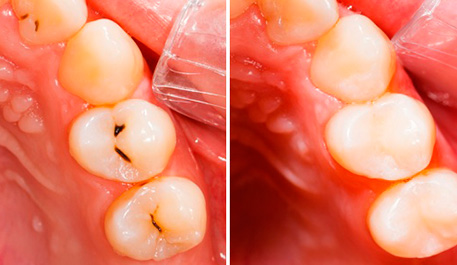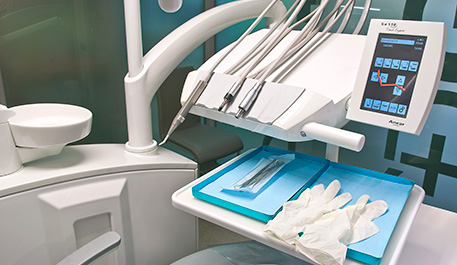Conservative dentistry
The purpose of conservative dentistry is preserve the original structure of the tooth strong . We use different techniques trying to return the piece to the most anatomical, functional and aesthetic situation.
At the Dental Clinic Dr. Gisbert believes that conservative dentistry is a fundamental pillar of our practice as we think that no other piece is better than our own.


Do you have a cavities?
Dental caries treatment is the most common case where we apply conservative dentistry. Through rotary devices we remove the caries tissue trying to maximum preservation of what is healthy.
It is very important to prevent tooth decay through good oral hygiene and regular check-ups strong. Caries is often located below the surface of the tooth or in the space between tooth and tooth, so the patient cannot see them. Therefore, the best method to detect them is with periodic check-ups that may include fin x-rays specially designed for this purpose.
Once detected, we remove the caries, disinfect the area and close the orifice of the tooth with a material of the same color; the composite. This procedure is known as dental filling.
If the caries is large but we have been able to preserve the dental nerve, we can choose to reconstruct it using an inlay that returns the lost anatomy. It is a question of making an impression of the affected area and the laboratory makes the defect with ceramic or ceromer that will later be cemented in the affected tooth.
When caries is very advanced, reconstructions are not enough and endodontics or extraction must be performed in the worst case.
Untreated caries and unnoticed caries can end up in mouth infections (mainly fistulas and phlegmons) which if not treated properly can lead to serious infections that require hospitalization.
Biodentina
The emergence of this biomaterial has meant a very significant change in the area of Conservation and Endodontics.
Often in caries near the dental pulp (nerve) forced us to perform an endodontic (remove the nerve from the dental piece). Currently, once the caries has been removed, Biodentine can be applied in direct contact or near the nerve and its biocompatibility means that in 90% of cases it behaves as its own tissue and does not need to do endodontics.

